THE KNIGHTS TEMPLARS
BOOKS BY FRANK SANELLO
The Opium Wars: The Addiction of One Empire and the Corruption of Another
Reel v. Real: How Hollywood Turns Fact into Fiction
Steven Spielberg: The Man, the Movies, the Mythology
Jimmy Stewart: A Wonderful Life
Eddie Murphy: The Life and Times of a Comic on the Edge
Stallone: A Rocky Life

Copyright 2003 by Frank Sanello
First paperback edition 2005
All rights reserved. No part of this book may be reproduced in any form or by any electronic or mechanical means, including information storage and retrieval systems, without written permission from the publisher, except by a reviewer who may quote passages in a review
Published by Taylor Trade Publishing
An imprint of the Rowman & Littlefield Publishing Group
4501 Forbes Boulevard, Suite 200
Lanham, Maryland 20706
Distributed by National Book Network
The hardback edition of this book was previously catalogued by the Library of Congress Cataloging as follows:
Sanello, Frank.
The Knights Templars : Gods warriors, the devils bankers / Frank Sanello.
p. cm.
Includes bibliographical references () and index.
1. TemplarsHistory. I. Title.
CR4743 .S3 2003
271'.7913dc21
2003006714
ISBN 978-0-87833-302-8 (cloth : alk. paper)
ISBN 978-1-58979-259-3 (pbk : alk. paper)
 The paper used in this publication meets the minimum requirements of American National Standard for Information SciencesPermanence of Paper for Printed Library Materials, ANSI/NISO Z39.481992.
The paper used in this publication meets the minimum requirements of American National Standard for Information SciencesPermanence of Paper for Printed Library Materials, ANSI/NISO Z39.481992.
Manufactured in the United States of America.
For Bryan Smith

CONTENTS


Jerusalem, indeed all of the Holy Land, was a terrifying place, not unlike our own Wild West, when Hugues de Payen, a veteran of the Crusades, showed up there in the early years of the twelfth century. The capital was a city perpetually under siege by guerilla attack, except, unlike in our Old West, the local marauders were not Stone Age hunter-gatherers but dispossessed members of a more advanced civilization and culturealso better armed and equipped than the besieged occupiers of their homeland.
The Order of the Poor Knights of Christ and the Temple of Solomon was founded by de Payen, a knight who had fought in the First Crusade and participated in the capture of Jerusalem. De Payen was a member of the minor nobility and a vassal of a powerful feudal magnate, the Count of Champagne.
On a date lost to history in the year 1118 A.D., de Payen and eight comrades, unsolicited, presented themselves at the palace of Baldwin I, the King of Jerusalem. Baldwins late brother, Godfrey of Bouillon, had taken the city from the Saracens nineteen years earlier. The Patriarch of Jerusalem was also present at the meeting. Both the secular and religious leaders greeted de Payen and his men warmly. The King, in fact, placed an entire wing of his palace at their disposal and provided funds for their upkeep. Their new quarters rested on the ruins of a desecrated Arab mosque under which lay the remains of the ancient Temple of Solomon, the origin of the new orders name, Templars. The first of many legends surrounding the Templars began at this site, which the knights reportedly spent ten years excavating after gaining possession of it in hopes of finding the Holy Grail, the mythical cup of Jesus Last Supper. Conspiracy buffs, but not legitimate historians, maintain that the Templars were successful in their search, and that the Holy Grail was one of the orders most prized treasures, disappearing with the rest of its fabled wealth when the Templars were outlawed two centuries later.
Besides excavating the site, the Templars changed the faade and interior of the Temple to reflect the orders military role. The new Temple of Solomon anticipated Mies van der Rohes famous dictum that form follows function by almost a thousand years. The faade of the Temple was festooned with armor and shields. Every square inch of the interior walls displayed the hardware of medieval warfare: bridles, saddles, and lances. The Temple was more armory than monastery, a military barracks more than a temple.
The King of Jerusalem did not object to the Templars excavation of the sacred site or their less than pious taste for interior decor. In fact, Baldwin was an enthusiastic host because of the novel services de Payen and his comrades offered to perform for the beleaguered monarch.
The knights told the King that their goal was as far as their strength permitted, they should keep the roads and highways safe... with especial regard for protection of pilgrims. The offer was irresistible to the King and the Patriarch. The First Crusades stated purpose had been to recover Jerusalem so pilgrims could visit Christs birthplace, which had been forbidden after the Egyptian Saracens had taken the city at the end of the eleventh century.
While the Crusaders had conquered Jerusalem and made the city proper safe, the route to Jerusalem was plagued with bandits, dispossessed Muslims, and terrifying Bedouin horsemen who thundered over from their base camps in Jordan. The Victorian historian Charles G. Addison described the crisis succinctly: The infidels had indeed been driven out of Jerusalem, but not out of Palestine. Pilgrims disembarking at the port of Jaffa had to make their way inland to Jerusalem while enduring a perilous gauntlet that also included attacks by wild animals. The King may have been especially receptive to the Templars offer of protection since he himself had once been a prisoner of the Saracens.
In a ceremony at the Church of the Resurrection in Jerusalem, with the Patriarch presiding, the knights transformed themselves into monks and swore vows of chastity, obedience, and poverty. Eventually, it would be a matter of debate and murderous accusations exactly to whom the Templars owed obedience. As for their vow of poverty, the Church at this time conveniently recognized three forms of poverty: the first and strictest forbade the possession of all goods and property; the second prohibited the individual from owning property but allowed wealth to be shared by the group to which the individual belonged; the third accepted individual possession of food and clothing, with all other goods shared in common. The Templars adopted the second form, which would allow them to become enormously wealthy despite their vow of poverty, which was elastic.
At the beginning of the twelfth century, the Holy Land was more scary than holy. Why had Jerusalem been recovered at the cost of so many lives and expense if pilgrims couldnt reach the Holy Places within the city?
Financially and physically exhausted by the war to recapture the Holy Land and deserted by many Crusaders who returned to Europe with plunder once the city had been liberated, King Baldwin found himself undermanned, underfinanced, and outgunned to complete the work of the First Crusadethat is, to provide safe access to his capital. The Templars filled this vacuum as bodyguards consecrated by the church for the protection of pilgrims.
Next page

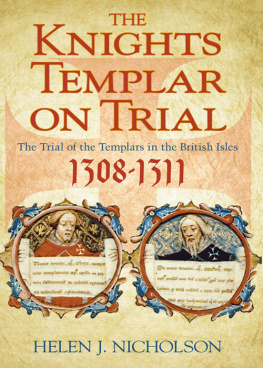
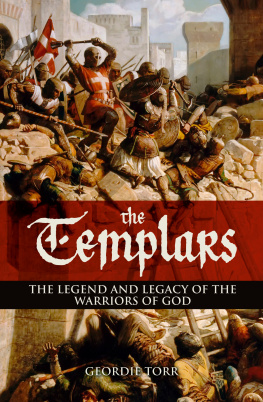
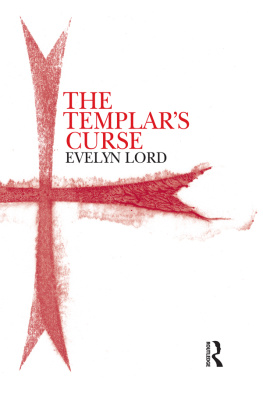
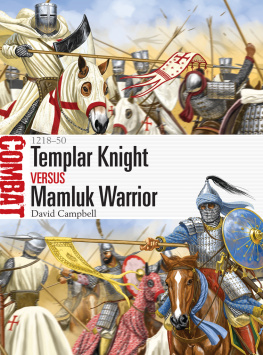
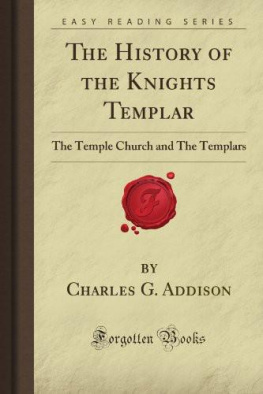
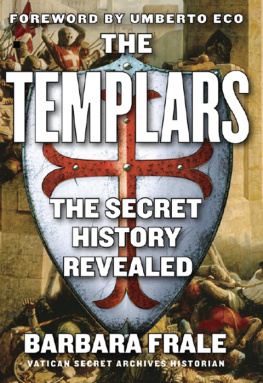
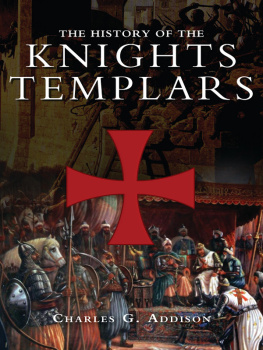
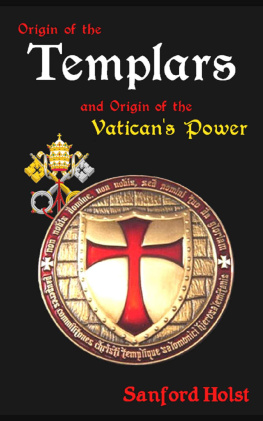
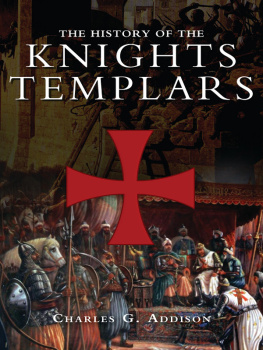
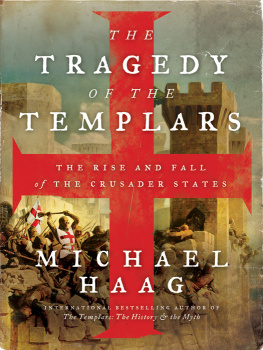

 The paper used in this publication meets the minimum requirements of American National Standard for Information SciencesPermanence of Paper for Printed Library Materials, ANSI/NISO Z39.481992.
The paper used in this publication meets the minimum requirements of American National Standard for Information SciencesPermanence of Paper for Printed Library Materials, ANSI/NISO Z39.481992.
